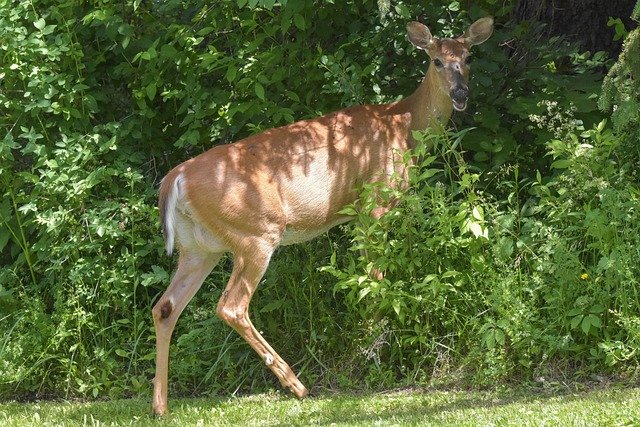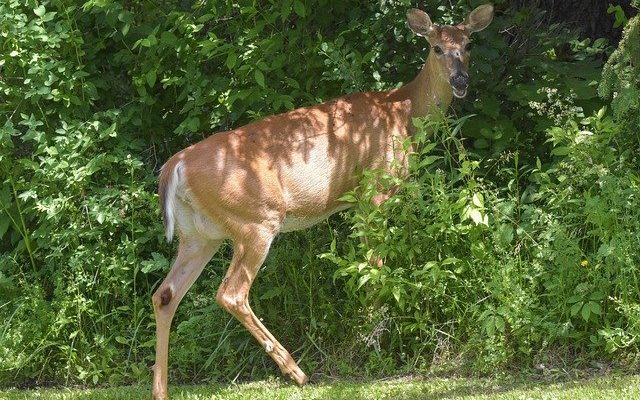
Let’s dive into the fascinating world of the white-tailed deer. Imagine sitting in the middle of a serene forest, with trees all around you. You spot a deer grazing quietly, so instinctively graceful. Now, consider what’s going on in that deer’s mind. What does it eat, and how does it evade predators? The answers are not just about survival; they can reveal how these animals interact with their environment.
Understanding the Diet of White-Tailed Deer
The diet of a white-tailed deer is as diverse as the landscapes they inhabit. These creatures are classified as herbivores, which means they primarily eat plants. However, their menu can change depending on the season and availability of food. In spring and summer, they feast on tender leaves, flowers, and grasses. The lush greenery is like a buffet for them, offering plenty of options.
As fall approaches, deer start to munch on acorns and nuts, which provide them with the energy they need to prepare for the cold winter months. They’re not picky eaters, either! White-tailed deer will also consume fruits and crops when they venture into agricultural areas. You might find them nibbling on apples or corn, reminding you of that one neighbor’s garden that keeps getting visited by local wildlife.
During winter, their diet shifts again due to food scarcity. They rely on twigs, bark, and dried leaves. This is a tough time because their choices are limited. It’s like having to eat the same meal every day—pretty monotonous! Yet, this adaptability helps them survive even when conditions are challenging.
Hunting Strategies of the White-Tailed Deer
White-tailed deer are known for their remarkable ability to elude predators, and they use a mix of tactics to stay safe. One of their primary strategies is their keen sense of smell. Think of it as having a built-in alarm system, alerting them to danger before it’s too late. Their noses can detect threats from far away, giving them enough time to react.
In addition to their impressive olfactory skills, these deer are also masters of camouflage. Their reddish-brown fur blends seamlessly with the forest, making it hard for predators to spot them. When they become alert, they often freeze in place, instinctively hoping that their stillness will keep them hidden. It’s like a game of hide-and-seek where they’ve perfected their hiding skills.
When confronted, a white-tailed deer can take off in a flash. They’re incredibly fast and can leap over obstacles with ease. This ability allows them to escape from danger quickly. The famous “bounding” run, where they leap into the air, is both a display of agility and a way to confuse predators. It’s like they’re saying, “You can’t catch me!”
The Role of Social Behavior in Survival
White-tailed deer are social animals, often found in groups called “herds.” This social structure plays a significant role in their survival. By sticking together, they can watch out for each other. When one deer senses danger, it often warns the others, allowing them to escape as a group. Imagine being at a concert with friends; if one of you spots an exit during a fire drill, everyone gets out safely.
Within these herds, deer establish a hierarchy. Dominant individuals often get first dibs on food and prime resting spots. However, this doesn’t mean there’s constant fighting. Instead, they use body language and subtle signals to communicate. A flick of the tail or a stomp of a hoof can convey a lot about their feelings or intentions.
Interestingly, female deer, known as does, tend to be more social than males. Bucks (male deer) are often solitary, particularly during the rut (breeding season). They might roam alone, looking for mates, and that’s when their hunting strategies kick in. They become more active and bold, which can put them at greater risk of encountering predators.
Impact of Habitat on Diet and Hunting
Habitat plays a significant role in shaping the diet and hunting strategies of white-tailed deer. These deer thrive in a variety of environments, including forests, grasslands, and even suburban areas. Their adaptability is one of their greatest strengths. For instance, in suburban areas, they might find gardens or landscaped yards as a food source, while in the wild, they rely on native plants.
In areas with plentiful food sources, deer can grow larger and healthier, resulting in increased reproduction rates. Imagine living in a neighborhood with all the best restaurants—life would be pretty good! On the other hand, in regions where food is scarce, deer may struggle to survive, leading to lower population numbers.
Additionally, the availability of cover (like dense bushes and trees) impacts how deer evade predators. In more open landscapes, they might become more vulnerable, changing their behavior to adapt. They might become more nocturnal, feeding primarily at night to avoid daytime hunters. It’s like how some people prefer to shop late at night when stores are less crowded.
What Humans Can Learn from White-Tailed Deer
The life of a white-tailed deer offers some valuable lessons for us humans. Their resilience and adaptability remind us of the importance of being flexible in our environments. Changes in diet and behavior due to external pressures can also reflect how we might navigate challenges in our lives.
Furthermore, understanding these deer enhances our appreciation for wildlife. By learning about their habits, we can work towards preserving their habitats and ensuring they continue to thrive. Imagine if we all took a moment to appreciate nature; it could foster a sense of responsibility towards conservation efforts.
Plus, their social behavior can teach us a thing or two about teamwork. Just like deer rely on each other for safety, we can strengthen our communities by looking out for one another. In a way, we all have our herds, whether it’s family, friends, or colleagues.
The Future of White-Tailed Deer
Looking ahead, the future of white-tailed deer depends on various factors, including habitat preservation and human interaction. Urban expansion and habitat loss pose threats to their populations. Ensuring that these magnificent creatures have safe spaces to live and thrive is essential.
Conservation efforts, such as creating wildlife corridors, can help maintain healthy populations. These corridors allow deer to move between areas without encountering human traffic or dangers. It’s like providing a safe path through a busy city—essential for their survival.
As we become more aware of the impact of our actions on wildlife, we can strive to coexist with nature. By supporting local conservation groups and understanding the importance of biodiversity, we contribute to a healthier environment for both wildlife and ourselves.
With all this in mind, the diet and hunting strategies of white-tailed deer are not just fascinating facts. They unveil deeper connections between nature and ourselves. The next time you see a deer, remember the intricate web of survival they navigate daily. It’s a reminder that every creature, no matter how small or seemingly ordinary, plays a vital role in our world.

